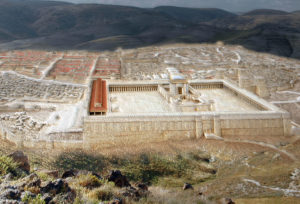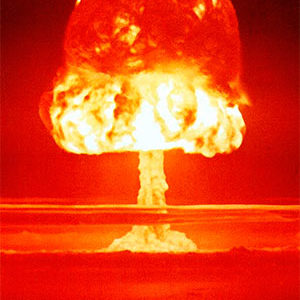IN A VISION about how the world as we know it will end, John of Revelation sees a global gathering of “all the rulers and their armies to a place with the Hebrew name “Armageddon” (Revelation 16:16).
John, however, never gets around to reporting the battle.
But scattered throughout his letter are details of other battles, which some students of the Bible link to Armageddon:
- 200 million-man army. “I heard the size of their army, which was 200 million mounted troops” (Revelation 9:16).
- They attack God’s people. “They will surround the camp of God’s people and the city that his people love” (Revelation 20:7-9, CEV).
- There’s a bloodbath. “Blood flowed . . . in a stream about 180 miles [296 km] long and as high as a horse’s bridle” (Revelation 14:20).
- A fireball destroys the invaders. “Fire from heaven came down on the attacking armies and consumed them” (Revelation 20:9).
Actually, there’s no such place as Armageddon on the map.
Armageddon—a word used only once in the Bible—is supposed to be a Greek spelling that mimics the sound of a particular Hebrew phrase. Which phrase is uncertain. The most popular guess is that the Greek word is a mispronunciation of two Hebrew words: “har Megiddo” (mountain of Megiddo). Another possibility is “ir Megiddo” (city of Megiddo).
Megiddo was an ancient fortress built on a 100-foot (30 m) hill in the line of rolling hills called the Mount Carmel range. Megiddo controlled a major route through these hills. Romans called this route the “Way of the Sea” because it paralleled the coastline.
Beneath the fortress sat a sprawling, triangle-shaped valley called by various names: Jezreel valley, Esdraelon, and Valley of Armageddon. The valley has three legs: (1) 20 miles (32 km), running southwest along the foot of the Carmel range, (2) 20 miles (32 km), extending north to Mount Tabor, (3) 12 miles (19 km), stretching west toward the coast along the Nazareth ridge.
When Napoleon saw this valley, he declared it the world’s most perfect battlefield. In fact, more than 30 major battles have been fought there.
- Joshua captured Megiddo.
- Deborah’s Hebrew militia charged down Mount Tabor and routed a chariot corps bogged down at the Kishon River.
- Gideon overpowered the Midian raiders.
- Jewish king Josiah died in a battle with Neco of Egypt.
- In 1918, British general Edmund Allenby charged into this valley from the east, with the rising sun to his back, and liberated the region from the Turks of the Ottoman Empire.
Some scholars say John of Revelation was describing yet another battle to come. Others say John used this valley as an excellent symbol of the final battle between good and evil. In either case, John made this much clear: God wins. Good prevails.
[Excerpt from newly released Who’s Who & Where’s Where in the Bible 2.0.]


I have heard passionate debate for years over the contents of the Book of Revelation. While I understand the comfort some receive from believing it foretells the future I suspect is quite the opposite. I believe the events have already occured
There is some pretty compelling evidence to support your position. I worked through a lot of those theories in an earlier book I wrote: Complete Guide to Bible Prophecy. It’s hard to miss the link to the Romans as the bad guys in Revelation. Some folks acknowledge the link, but say the prophecy points to the future, too.